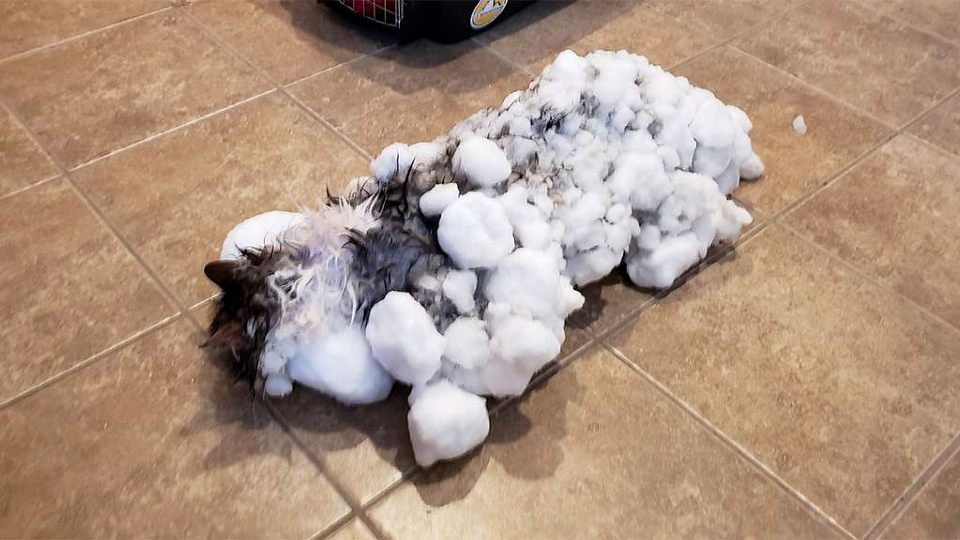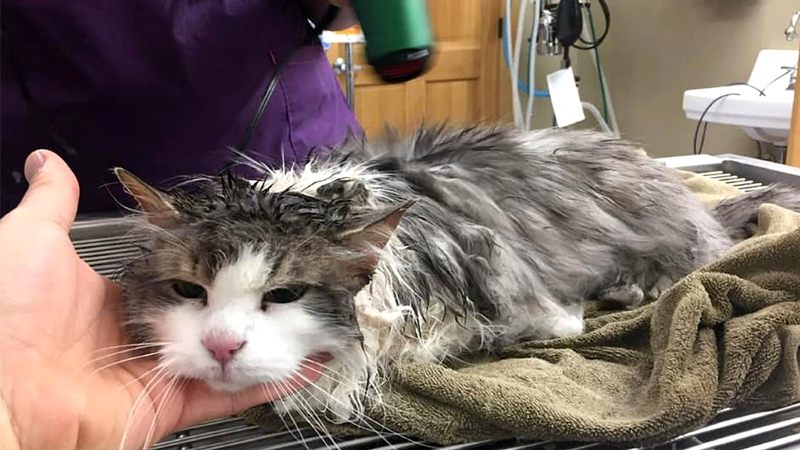

Veterinarians revive Fluffy the Cat who was found lifeless and completely frozen in the snow
Her her body temperature was below what the clinic's thermometers could read
IN THE ODDITIES ARCHIVES
Artificial Intelligence Newscaster
Harvard University UFO
Loch Ness
Clone
Donald Trump Look-Alike
A Real Killer Clown

Fluffy the cat revived after being found nearly frozen to death in Montana
February 8, 2019 -- The owners came home early last Thursday to find Fluffy the cat had been crusted onto a hard-packed snowbank, as though the cat had been sitting in one spot for a long time while the blowing snow drifted up around it.
"She [was] crouched down looking like she's hunting something in the snow bank," Dr Clark said.
"And then they realized 'oh my gosh, she's not moving'."
Three-year-old "Fluffy" the cat was brought in last week unresponsive with a body temperature that would not register on the clinic’s thermometers, Dr. Jevon Clark of the Animal Clinic of Kalispell said Thursday.
The owners did not want to be identified. Dr Clark said they did not do anything wrong and he suspected "something traumatic happened" that caused Fluffy to curl up outside.
"Either something fell on her or she fell or something chased her and she got injured … [and ] she couldn't get back to her normal little hiding spots that she goes to."
Staff warmed the cat using towels, cage warmers and intravenous fluids.
Fluffy is normally a little crabby, so when she began growling after about an hour, Dr Clark knew Fluffy would be fine.
"The crabbiest cats are survivors," Dr Clark said.


Worms Frozen for 42,000 Years in Siberian Permafrost Wriggle to Life

Tiny nematodes like this one were found to be unexpectedly hardy, reviving after thousands of years frozen in Arctic ice.
In Siberia, melting permafrost is releasing nematodes — microscopic worms that live in soil — that have been suspended in a deep freeze since the Pleistocene. Despite being frozen for tens of thousands of years, two species of these worms were successfully revived, scientists recently reported in a new study.
Their findings, published in the May 2018 issue of the journal Doklady Biological Sciences, represent the first evidence of multicellular organisms returning to life after a long-term slumber in Arctic permafrost, the researchers wrote.
For the new study, researchers analyzed 300 samples of Arctic permafrost deposits and found two that held several well-preserved nematodes. One sample was collected from a fossil squirrel burrow near the Alazeya River in the northeastern part of Yakutia, Russia, from deposits estimated to be about 32,000 years old. The other permafrost sample came from the Kolyma River in northeastern Siberia, and the age of nearby deposits was around 42,000 years old, the scientists reported.
However, the nematodes weren't the first organism to awaken from millennia in icy suspension. Previously, another group of scientists had identified a giant virus that was resuscitated after spending 30,000 years frozen in Siberian permafrost.
See the entire article HERE